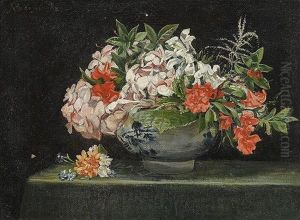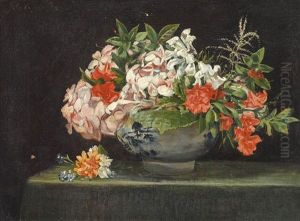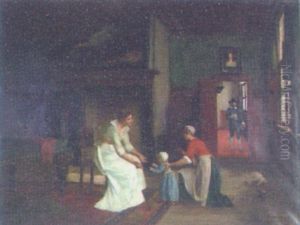Jules Lambeaux Paintings
Jules Lambeaux was a Belgian sculptor who was born on January 14, 1852, in Antwerp, Belgium. He is best known for his passionate and often sensual sculptures that reflect a mastery of form and movement. Lambeaux was part of the artistic movement of his time that emphasized a return to naturalism and classical techniques, yet he also infused his works with a modern sense of expression and emotion.
During his early years, Lambeaux studied at the Royal Academy of Fine Arts in Antwerp, where he was a pupil of Joseph Geefs. He was quickly recognized for his talent and began to receive commissions. In 1878, he moved to Paris, which was then the hub of artistic innovation in Europe. There, he was influenced by the works of other sculptors such as Auguste Rodin and Jean-Baptiste Carpeaux. Lambeaux's work was characterized by a dynamic and dramatic flair, often depicting human figures in moments of intense passion or anguish.
One of his most famous works is 'The Kiss', which was created in 1890. This sculpture, with its expressive and intertwined figures, exemplifies the romantic and sometimes erotic qualities that are present in many of his works. However, Lambeaux's most controversial and ambitious work is 'The Human Passions', a colossal relief for the Temple of Human Passions in the Cinquantenaire Park in Brussels. This large marble piece, completed in the late 19th century, created a scandal due to its nude figures and the bold representation of various emotions.
Despite the controversy, Lambeaux continued to work and create art that resonated with both the public and critics. His sculptures often featured allegorical and mythological subjects, handled with a sense of realism that brought these themes into a contemporary context. Lambeaux's contributions to public monuments and his influence on Belgian sculpture were significant, and his works can be found in many public spaces and museums across Belgium.
Jules Lambeaux passed away on June 2, 1908, in Brussels. His legacy is marked by his ability to capture the complexity of human emotions in stone and bronze, and he remains an important figure in the history of European sculpture.





